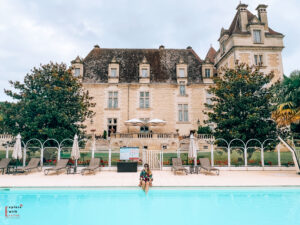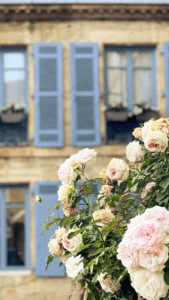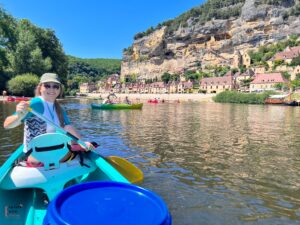Explore with Ersilia contains affiliate links and is a member of the Amazon Services LLC Associates Program. If you make a purchase using one of these links, I may receive compensation at no extra cost to you. affiliate links are how we keep this content free. A huge thanks if you use these as it helps a lot! See the Full Policy for more information.
Why the Dordogne Should Be on Every Traveler’s Bucket List
There’s a magical corner of France where limestone cliffs cradle medieval villages, prehistoric art hides in ancient caves, and castles stand guard over a winding river valley. Welcome to the Dordogne – France’s most captivating yet wonderfully under-the-radar destination!
After a decade of exploring this enchanting region from my home base in Toulouse, I’ve become intimately acquainted with what makes the Dordogne truly special.
It’s one of those rare places that combines rich history, jaw-dropping natural beauty, and world-class gastronomy without the overwhelming crowds that plague France’s more famous destinations.
Whether you’re wandering through Sarlat’s lantern-lit medieval streets, paddling beneath dramatic castles on the gentle Dordogne River, or savoring foie gras paired with sweet Monbazillac wine, this region delivers authentic French experiences that feel increasingly rare in our globalized world.
The crown jewels of the region are undoubtedly the mighty castles of Beynac and Castelnaud, which face each other across the river in a centuries-old standoff that perfectly encapsulates the region’s dramatic history.
Standing on the ramparts of Beynac, looking across to its English rival, I’ve felt the weight of history in a way that no textbook could ever convey – these stones have witnessed the ebb and flow of power that shaped modern Europe.
From perfectly preserved bastide towns like Monpazier to the prehistoric wonders of Lascaux IV, from the cliff-hugging village of La Roque-Gageac to the spectacular Gardens of Marqueyssac, the Dordogne offers an astonishing variety of experiences for the first-time visitor.
This guide resumes my years of exploration into 12 essential experiences that I think will help you discover the very best of this extraordinary region, no matter how long your itinerary might be ! I organised them in my personal favourite order. Let’s dive in!
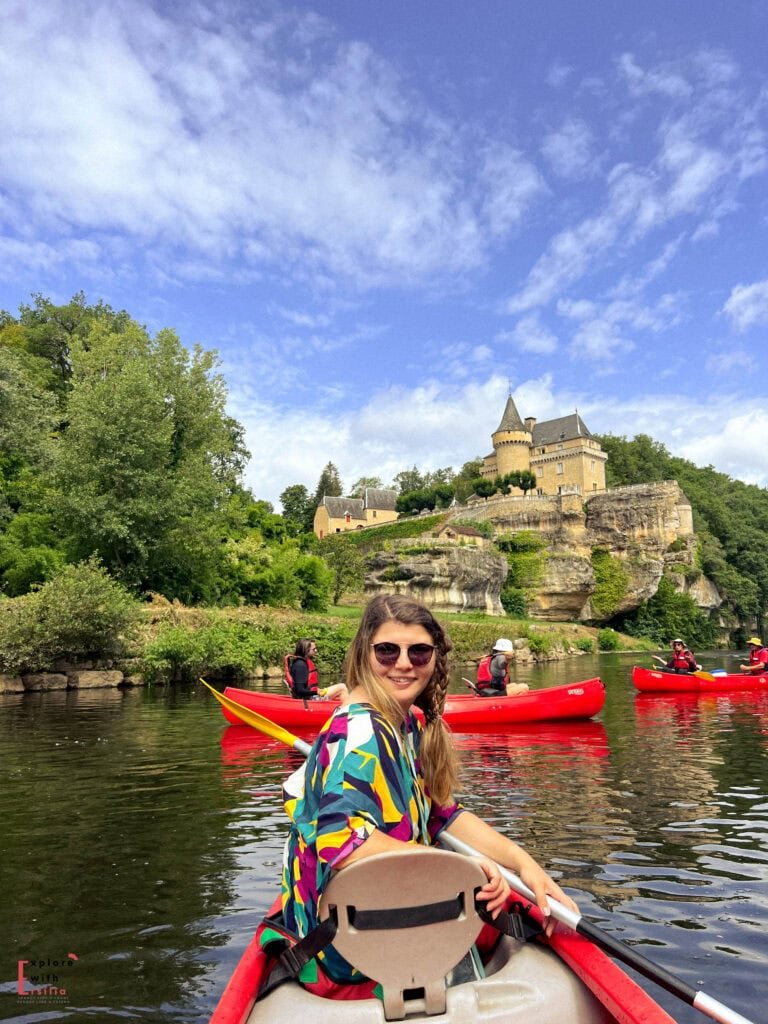
Planning your trip to the Dordogne Valley?
Here is everything to know : how to get there, where to stay, what and where to eat, the best things to see and to do!
So, what are the best things to see and do in the Dordogne as a first time visitor?
1. Wander Through Medieval Sarlat-la-Canéda
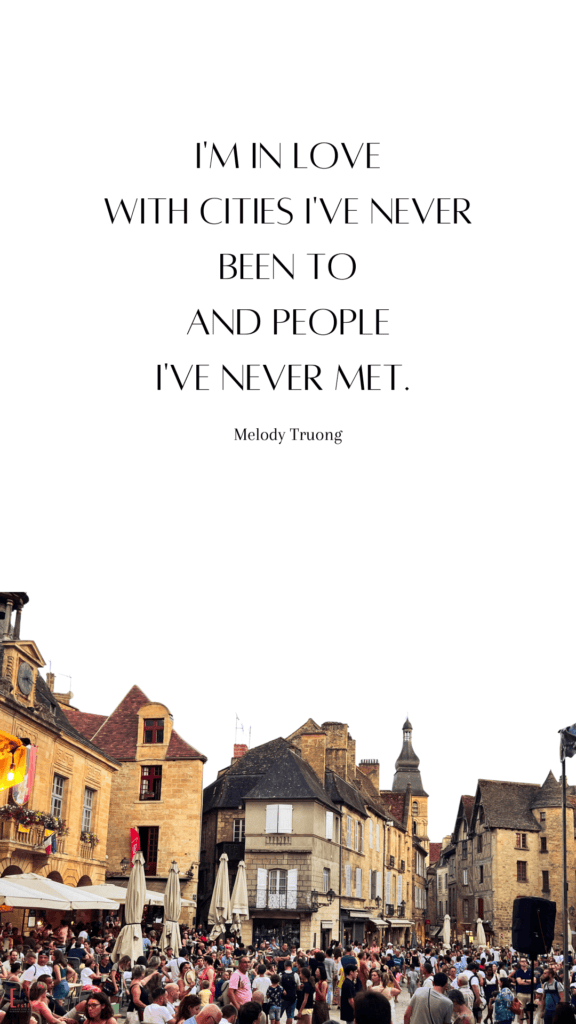
The perfectly preserved medieval town of Sarlat-la-Canéda glows golden in the evening light when specially designed illumination brings the historic buildings to life. I’ve stayed here three different times, and each visit reveals new treasures in its winding lanes.
Arrive before 9am if you’re visiting the Saturday market – I made that mistake once and could barely move through the crowds by 10am!
The market itself is a sensory feast, with stalls selling everything from local strawberries and walnuts to regional cheeses, foie gras, and freshly baked bread.
Spend time exploring the town’s remarkable collection of 14th-century buildings, many featuring the quintessential Périgord architecture of golden stone and steep-pitched roofs.
Don’t miss a visit to the former church of Sainte-Marie, now featuring a glass elevator designed by architect Jean Nouvel that gives spectacular views over the medieval rooftops. Make sure to book it in advance, as it sells out a 2 weeks in advance.
In the evening, the Place de la Liberté comes alive with diners at sidewalk cafés, offering the perfect opportunity to people-watch while savoring regional specialties.
2. Journey Back 17,000 Years at Lascaux IV
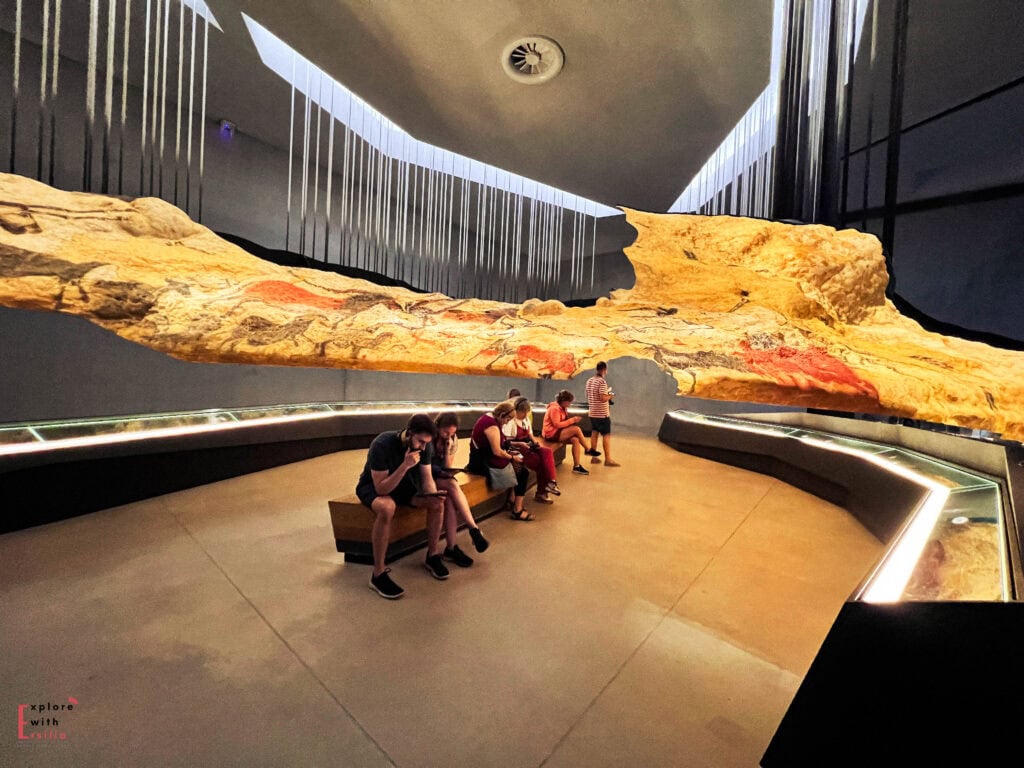
The incredible replica of the famous prehistoric cave delivers an experience almost identical to viewing the original paintings. I discovered the magic of cave replicas’ in France and I was in awe !
Make sure to book tickets well in advance – they don’t sell them on-site, and you’ll be turned away without a reservation!
The guided tour brings these ancient masterpieces to life, showing how our ancestors used the natural contours of the rock to create dynamic animal forms.
What struck me most during my visit wasn’t just the technical skill of these prehistoric artists, but how their work evokes such emotional power even across 17,000 years of human history.
The bulls, horses, and deer seem to move across the cave walls, created with sophisticated techniques including perspective and shading that wouldn’t be “rediscovered” until the Renaissance.
Beyond the cave replica itself, Lascaux IV includes excellent interactive exhibits that explain the cultural and historical context of these remarkable paintings, giving visitors a deeper understanding of our Cro-Magnon ancestors.
3. Kayak Through the Valley of Five Castles
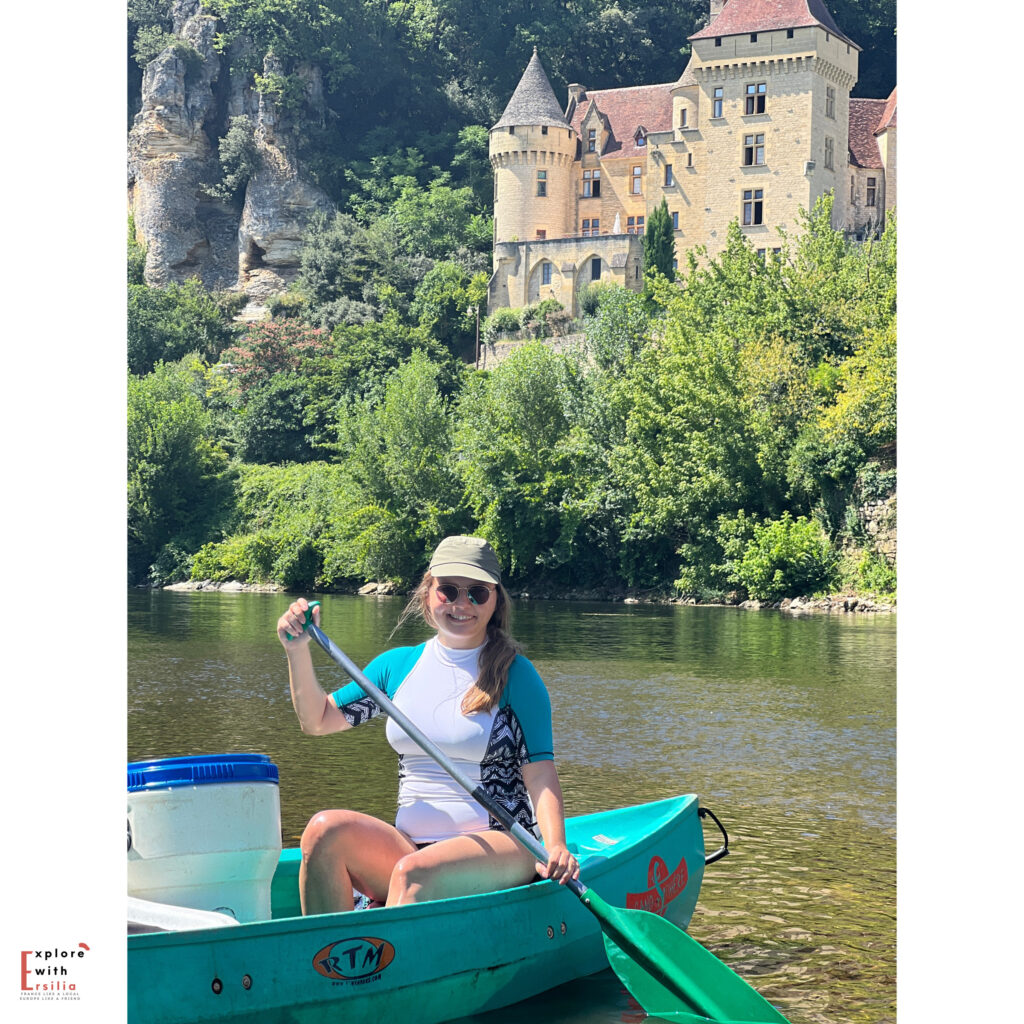
One of my absolute favorite Dordogne experiences!
Glide down the gentle Dordogne River from Vitrac to Beynac, passing five magnificent medieval castles along the way. Even as a kayaking novice, I found the current manageable while still doing most of the work for me.
The perspective from water level, seeing the castles just as medieval travelers would have, is simply unbeatable.
The standard route takes about 2-4 hours, depending on how often you stop, and rental companies will transport you back to your starting point afterward.
Each bend in the river reveals another postcard-perfect scene: Château de Montfort perched dramatically on its promontory, the honey-colored houses of La Roque-Gageac reflected in the calm water, and the imposing fortress of Beynac commanding the heights.
Pack a waterproof case for your camera and phone – you’ll want to capture these views!
4. Marvel at La Roque-Gageac’s Cliffside Village
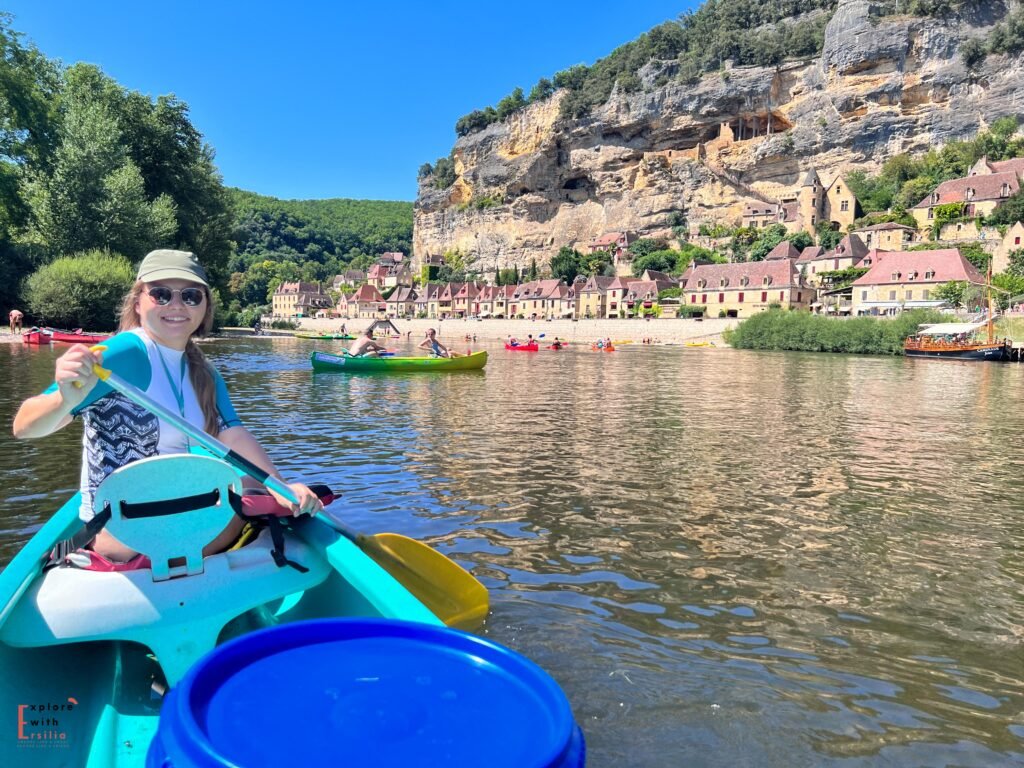
This impossibly picturesque village built directly into golden limestone cliffs is consistently rated among France’s most beautiful. What makes La Roque-Gageac particularly remarkable is how the village seems to grow organically from the massive limestone cliff that shelters it.
The natural protection offered by the rock face explains the settlement’s strategic importance – evidence suggests continuous habitation here since prehistoric times. The village stretches in a narrow band between the cliff and the Dordogne River, with houses stacked vertically to fit the limited space.
Don’t miss La Bambousaie de La Roque-Gageac, a quick visit on the right side of the village just after the parking area. This exotic garden was created thanks to La Roque-Gageac’s unique microclimate and features bamboo and other tropical plants that have no business thriving in central France!
After exploring, I recommend cooling off with a dip in the river – the small beach directly opposite the village offers a refreshing swim with unbeatable views.
5. Explore the Mighty Castles of Beynac and Castelnaud
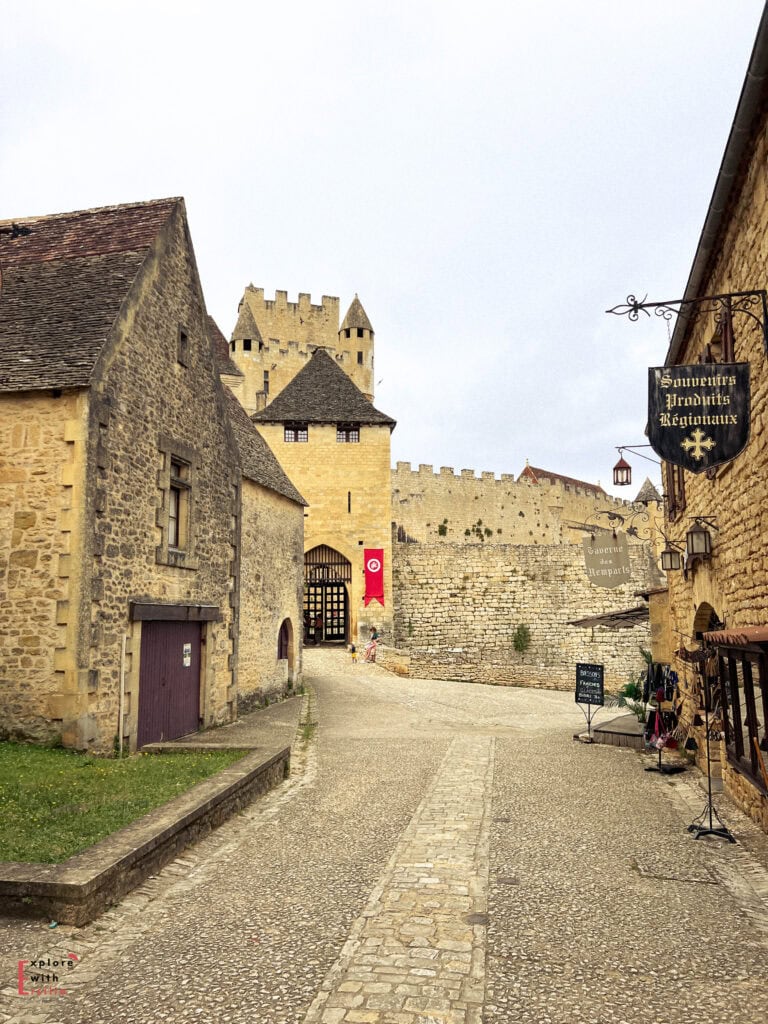
Visit both Château de Beynac and Château de Castelnaud, which face each other across the Dordogne River. During the Hundred Years’ War, Beynac remained French while Castelnaud was held by the English – these two fortresses literally stared each other down across the frontier.
Standing on the ramparts of Beynac, looking across to Castelnaud, helps you understand the medieval territorial disputes in a way that no history book can match. The architectural differences between the two castles tell their own story – Beynac is more austere and defensive, while Castelnaud eventually incorporated more comfortable residential elements.
At Beynac, climb all the way to the top of the keep for spectacular views over the Dordogne Valley, then explore the surprisingly well-preserved great hall and kitchen.
At Castelnaud, don’t miss the Museum of Medieval Warfare with its reconstructed siege engines – watching a trebuchet launch a projectile helps you understand how these massive structures functioned as military machines.
6. Step Inside the “Crystal Cathedral” at Gouffre de Proumeyssac
The Gouffre de Proumeyssac, known as the “Crystal Cathedral,” features extraordinary crystal formations illuminated by a spectacular sound and light show. If you’re feeling adventurous, opt to descend into the cave by basket, just like the early explorers did.
The main chamber is absolutely massive – over 40 meters high – creating a cathedral-like space adorned with countless stalactites and crystal formations that sparkle under the carefully designed lighting.
While many caves feature stalactites and stalagmites, Proumeyssac is unique for its abundance of delicate, translucent calcite crystals that formed over millennia.
During my visit, I opted for the traditional basket descent, which slowly lowered me into the cavern while rotating to provide a 360-degree view – it was both thrilling and slightly terrifying! The constant temperature inside (about 13°C/55°F) makes this an especially welcome attraction during hot summer days.
7. Visit the Gardens of Marqueyssac
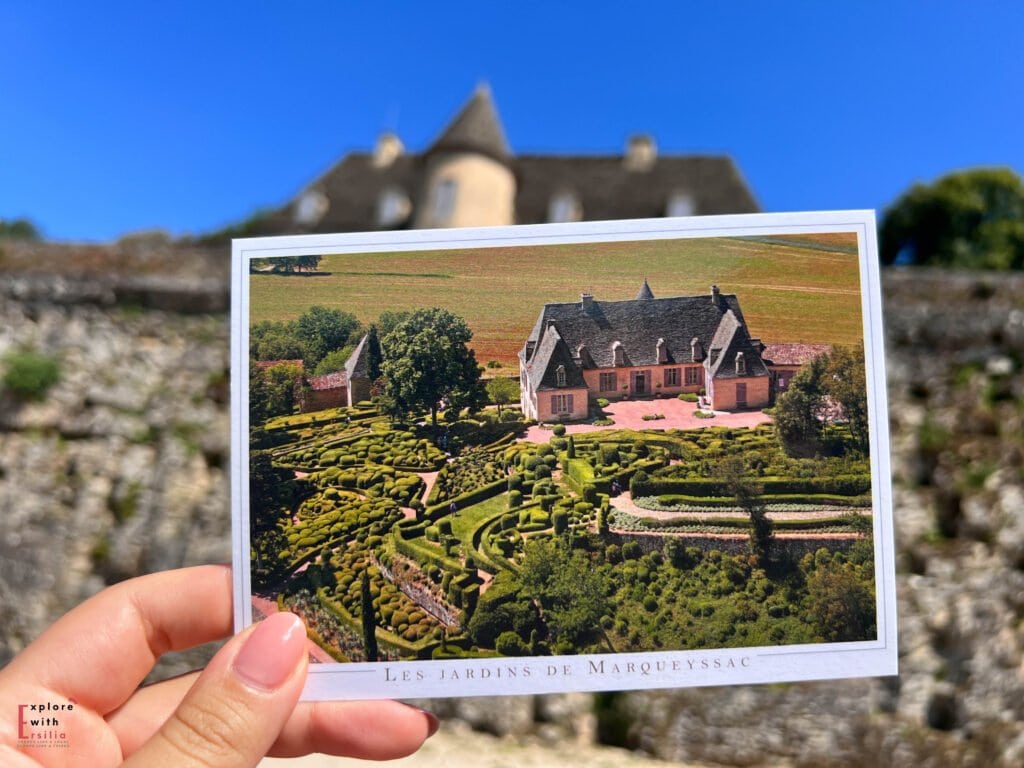
These extraordinary gardens feature over 150,000 hand-pruned boxwoods sculpted into flowing, undulating shapes. The “Belvédère” (viewpoint) offers what many consider the most spectacular panorama in the entire region – you can see the river winding past La Roque-Gageac, Beynac, and Castelnaud all in one breathtaking vista.
Created in the 19th century by Julien de Cerval, a passionate garden designer, the gardens combine French formality with romantic, Italian-inspired elements. When I visited, I arrived early to avoid crowds and spent nearly three hours exploring the six kilometers of pathways that meander through the meticulously maintained topiary.
If possible, visit on Thursday evenings in summer when thousands of candles illuminate the gardens, creating a truly magical atmosphere. Live music performances add to the enchantment, and watching the sunset from the Belvedere (with a view on another hilltop village!) as the castle-studded valley below turns golden is an experience I’ll never forget.
8. Experience a Traditional Dordogne Market
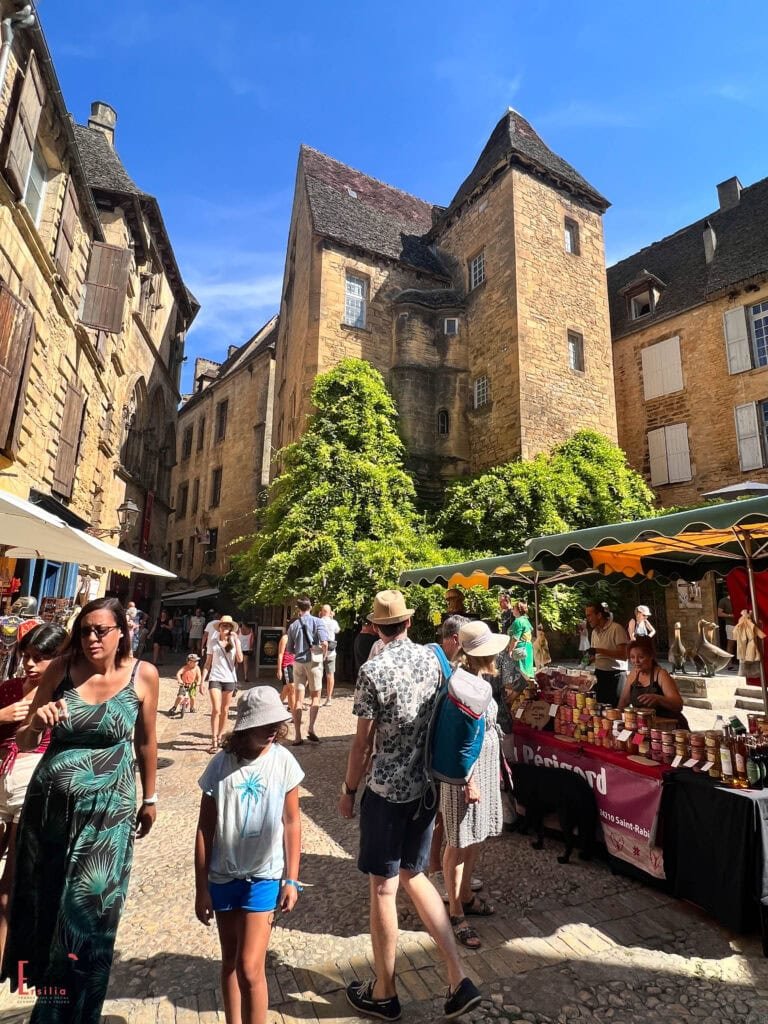
The markets of the Dordogne are not just places to shop – they’re the beating heart of local culture and an essential experience for any visitor. While Sarlat’s Saturday market is the most famous (and crowded), nearly every town and village hosts a weekly market worth exploring.
These bustling gatherings offer the freshest seasonal produce directly from local farmers – strawberries and asparagus in spring, juicy peaches and tomatoes in summer, cèpes mushrooms and walnuts in autumn. Local producers sell regional specialties like foie gras, confit duck, and walnut oil, often offering samples to entice customers.
I recommend arriving early (before 9am) to beat the crowds and watch the market come to life.
Bring a shopping bag and assemble ingredients for a picnic lunch to enjoy by the river later – there’s nothing better than a simple meal of fresh bread, local cheese, ripe tomatoes, and perhaps a slice of pâté enjoyed in a scenic spot.
For a different experience, look for evening markets (marchés nocturnes) during summer months, where you can enjoy ready-to-eat local specialties at communal tables under the stars.
9. Taste Regional Specialties: Foie Gras, Truffles and Walnuts
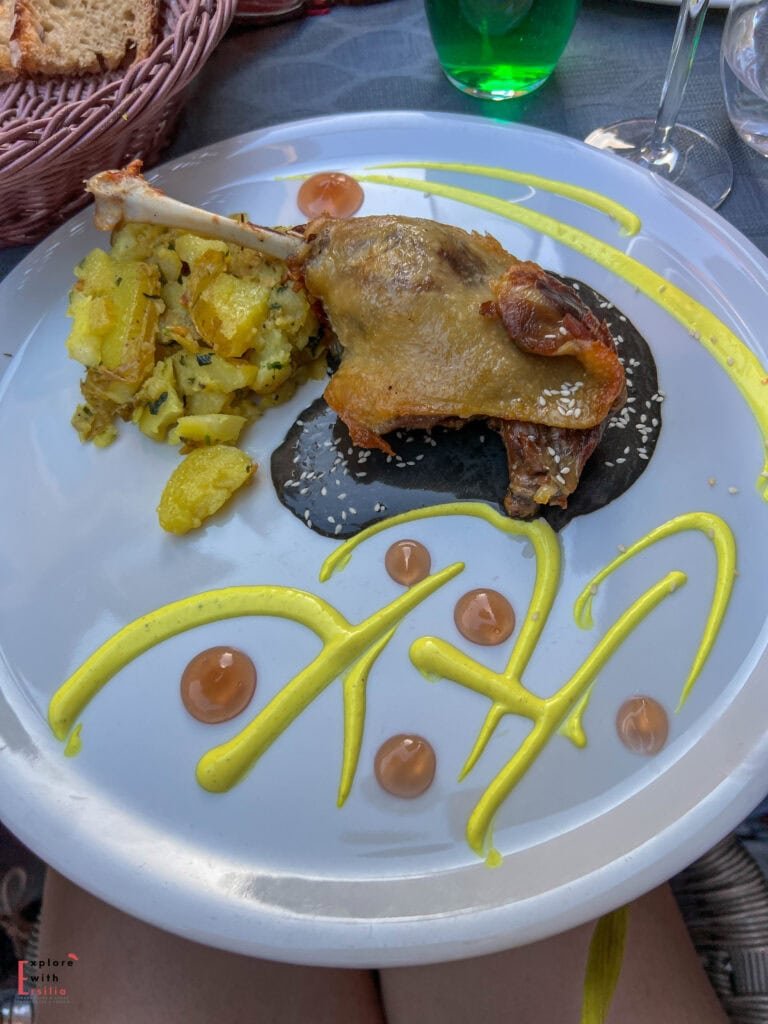
The Dordogne offers one of France’s most distinctive regional cuisines, built around a triumvirate of local specialties: foie gras, black truffles, and walnuts. No visit is complete without exploring this extraordinary gastronomic heritage.
Foie gras is ubiquitous throughout the region, served in various preparations from simple mi-cuit (semi-cooked) with toast to more elaborate terrines and parfaits. It pairs perfectly with sweet Monbazillac wine, creating a flavor combination that’s uniquely Périgourdine.
If visiting between December and February, don’t miss the opportunity to experience black truffle season. The Saturday morning truffle markets in Sarlat offer a glimpse into this secretive culinary world, while many restaurants feature special truffle menus during these months.
Walnuts have been cultivated in the Dordogne for centuries, and products made from them appear everywhere – from walnut oil dressing fresh salads to walnut liqueur concluding a meal to gâteau aux noix (walnut cake) served with afternoon coffee.
My personal favorite food discovery was a unique restaurant in Sarlat called Chez Pierro that serves its entire menu based solely on cheese – no meat, no fish, nothing to distract from pure cheese perfection!
10. Explore the Historic City of Périgueux
The capital of the Dordogne department beautifully blends Roman origins with medieval charm. Start at the impressive Saint-Front Cathedral with its distinctive Byzantine domes that look like they belong in Istanbul rather than central France.
Don’t miss the remarkable Vesunna Gallo-Roman Museum, designed by renowned architect Jean Nouvel. (Yes, as an architect, I am a fan of these kind of experiences!!)
Built directly over a Roman villa, its glass walls allow you to peer down into the perfectly preserved 2,000-year-old foundations and mosaics. The museum showcases everyday life during this period, with remarkably preserved heating systems and household objects that humanize these ancient inhabitants.
After exploring the Roman ruins, wander through the well-preserved medieval quarter with its winding streets and half-timbered houses.
On Wednesdays and Saturdays, the city hosts one of the region’s largest markets, stretching through multiple squares and offering an authentic slice of contemporary local life.
11. Discover Monpazier, the Perfect Bastide Town
This perfectly preserved medieval planned town dates from 1284 and features a central square with elegant arcaded walkways. Unlike many historic towns that evolved organically, bastides like Monpazier were meticulously designed new towns with a grid pattern that remains virtually unchanged since the Middle Ages.
Founded by England’s King Edward I during English control of the region, Monpazier exemplifies the bastide layout – a central market square surrounded by streets arranged in a perfect grid, with defensive walls encircling the settlement. The Place des Cornières, the main square, features arcaded walkways on all four sides where merchants have displayed their wares for centuries.
Most buildings follow standard dimensions dictated by the original town charter, creating an architectural harmony rarely found in medieval settlements. The Thursday market continues a tradition unbroken for over 700 years, offering yet another opportunity to experience authentic local life.
12. Discover Charming Bergerac and Its Cyrano Connection
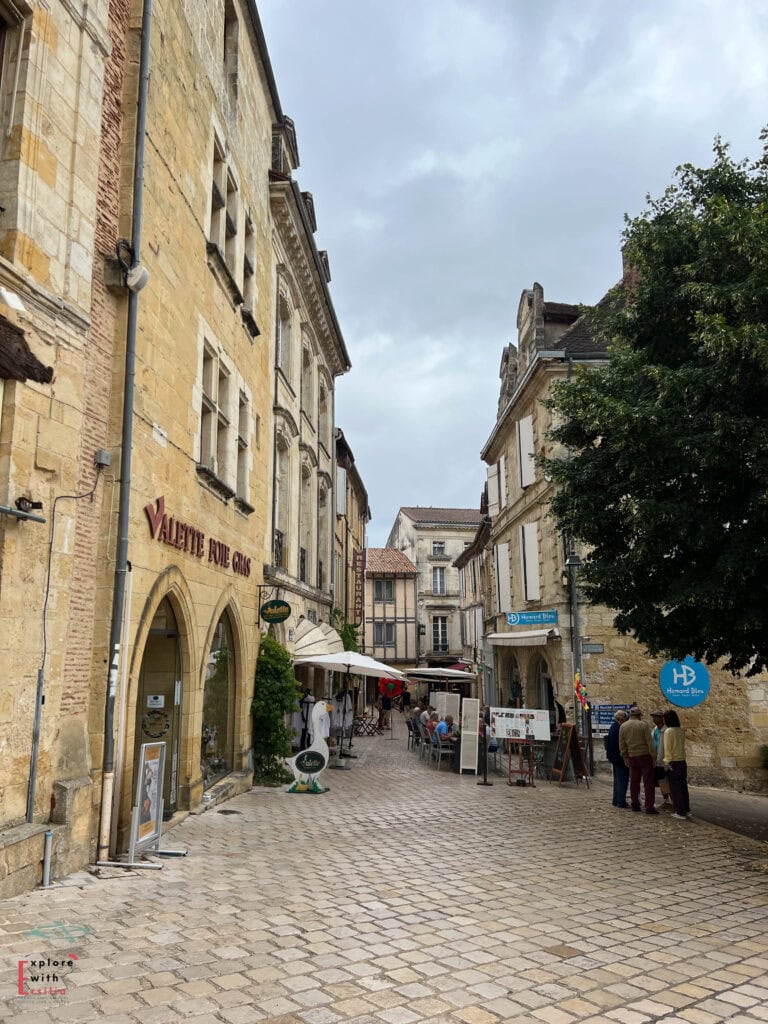
Bergerac offers a delightful change of pace from the medieval villages and prehistoric sites that dominate most Dordogne itineraries. This welcoming riverside town blends historic charm with a laid-back atmosphere that invites you to slow down and savor the moment.
During your wanderings, keep an eye out for the two statues dedicated to Cyrano de Bergerac – one wooden, one metal. Though the real historical figure had little connection to the town, Edmond Rostand’s fictional character has become Bergerac’s favorite son! These statues make perfect photo opportunities and offer a good excuse to explore the old quarter’s picturesque streets.
Don’t miss rue Clar with its beautiful half-timbered houses, or the atmospheric squares of Place Pélissière and Place Mirpe. The old town is compact enough to explore in a couple of hours, making Bergerac an ideal morning excursion.
Bergerac also serves as the gateway to one of France’s oldest wine regions, with vineyards producing excellent reds and whites that offer tremendous value compared to their famous Bordeaux neighbors. Stop by the Maison des Vins on the riverfront to learn about the region’s nine appellations and sample local wines in their tasting room.
13. Château de Monbazillac: Sweet Wine in a Fairytale Setting
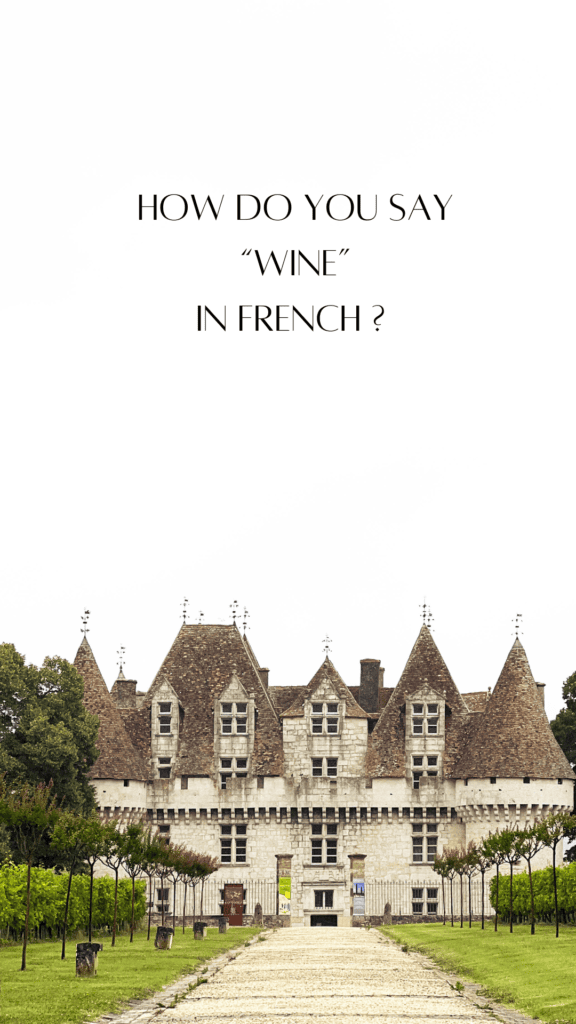
Just 15 minutes from Bergerac sits the elegant Château de Monbazillac, a Renaissance gem surrounded by vineyards producing some of France’s finest sweet white wines. The château’s distinctive shape, with its pointed towers and steep rooflines, creates a striking silhouette against the rolling vineyard landscape.
What makes this castle unique is its dual personality – part defensive medieval fortress, part refined Renaissance palace. This architectural blend reflects the turbulent history of a region that changed hands multiple times during religious conflicts and the Hundred Years’ War.
Inside, period furnishings and art collections give you a glimpse into the lifestyle of the vineyard-owning aristocracy. But the real star here is the wine – made from grapes affected by “noble rot” (a beneficial fungus that concentrates sugars), Monbazillac has been prized since the 16th century.
For the perfect experience, time your visit for late afternoon. Tour the château, then head to the tasting room where knowledgeable staff will guide you through a flight of the estate’s wines. Take your favorite bottle outside to the terrace where you can watch the sunset transform both château and landscape while enjoying what many consider the perfect pairing – Monbazillac with foie gras.
The golden hour light bathing this Renaissance château surrounded by vineyards creates one of the most magical photo opportunities in the region – a perfect end to your Dordogne explorations.
Bonus: Rocamadour – The Sacred Cliffside Marvel
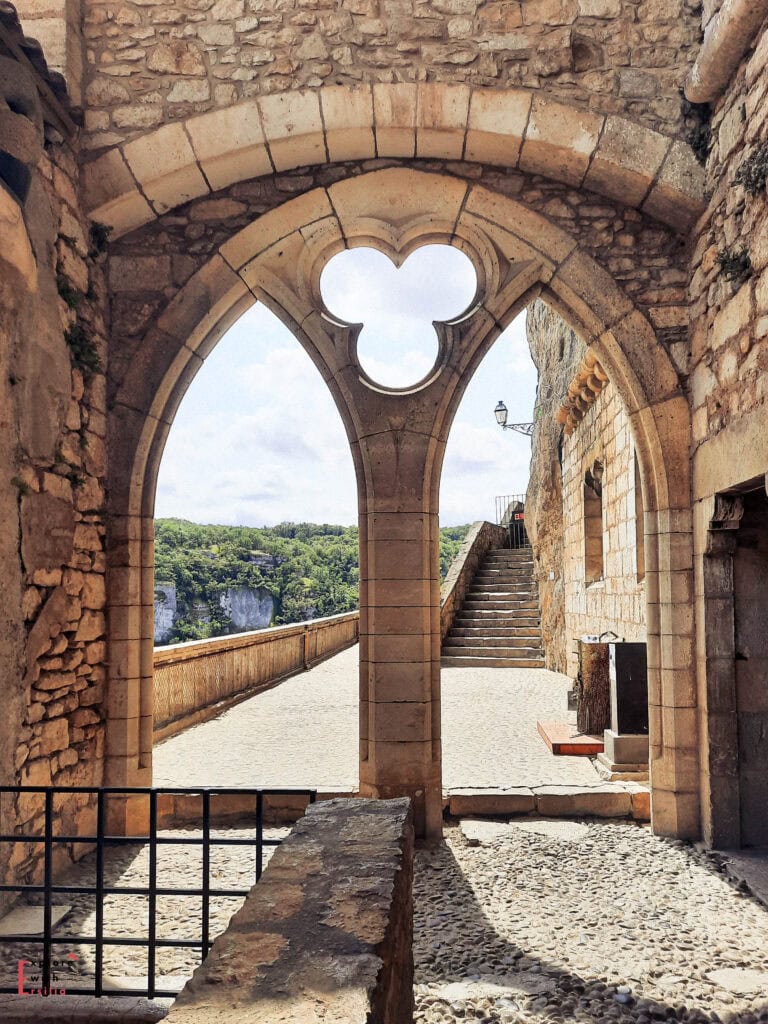
Though technically in the neighboring Lot department, Rocamadour is so close to the Dordogne’s eastern border that missing it would be a real shame for first-time visitors! This medieval village dramatically clings to a sheer limestone cliff, creating one of France’s most spectacular sights.
Here’s my hard-earned tip: start your tour from the top of the village and work your way down the many steps! The descent is far more pleasant than climbing up at the end of your visit. If mobility is a concern, there’s an elevator that connects the levels for a small fee.
The village rises in three tiers: the religious sanctuaries in the middle (featuring the famous Black Madonna statue that’s drawn pilgrims for centuries), medieval houses below, and a castle crowning the summit. The audacity of building an entire village into a vertical cliff face still amazes me.
For lunch, skip the touristy restaurants in town and head to Restaurant Le Bellevue, positioned across from the village where you can enjoy your meal with an unbeatable panoramic view of Rocamadour itself. This perspective gives you a true appreciation of the village’s dramatic setting.
Combine your visit with nearby La Forêt des Singes (Monkey Forest) where 150 Barbary macaques roam freely in a natural setting – it’s just a few minutes away and offers a delightful contrast to the historical intensity of Rocamadour.
Practical Tips for First-Timers
When to Visit
May and October offer the perfect balance of pleasant weather and fewer crowds, though I’ve found even in May there can be significant visitors. Check the French school holiday calendar before booking, as these periods bring more domestic tourists.
Where to Stay
For first-time visitors, I strongly recommend basing yourself in or near Sarlat-la-Canéda – its central location puts you within easy reach of the region’s major attractions while offering atmospheric evenings and excellent dining options.
Without a car, stay in Sarlat’s old town where everything is walkable. With a car, look for places slightly outside center to avoid parking headaches. “Le Clos du Peintre” just outside Sarlat is a beautiful stone house with only 5 rooms and a lovely pool, providing a perfect base for exploration.
The best places to stay for a first time trip in Dordogne

Where to stay
best for eco-solo travelling: La Villa des Consuls
best for couples: Le Clos du Peintre
best for families: La Maison des Peyrat
best for luxury: Domaine de Monrecour I have a full review of my experience
view that doesn’t break the bank: La Hoirie
splurge like a star: LE PETIT MANOIR
Moulin de l’Abbaye (Brantôme)
A map to help you book your stay
Use this easy-to-use map below to find your perfect stay in the Dordogne Valley. Simply select your dates in the search bar below, and it will compare the best prices over the main booking sites to show you the best deals.
Just click on the hotels and it will take you to that hotel. You will then book on your favourite site, don’t worry!
Transportation Guide
Having your own car is essential for exploring the Dordogne effectively.
The region’s most beautiful villages, castles, and prehistoric sites are scattered across a large rural area with limited public transportation options.
If renting a car, specify automatic transmission if you don’t drive manual – they’re less common and usually more expensive in France.
Download offline maps before arriving, as cell coverage can be spotty in some of the more remote valleys.
Food and Dining
Lunch is typically served between 12:00-2:00pm and dinner from 7:00-9:30pm.
Many restaurants close between meal services, so plan accordingly. Always begin interactions with “Bonjour” before asking questions or making requests – this simple courtesy makes a world of difference.
For an authentic experience, look for restaurants offering menu du terroir featuring regional specialties. The fixed-price lunch menus (formules) often offer excellent value compared to dinner prices.
The Dordogne offers an extraordinary range of experiences for first-time visitors, blending history, natural beauty, and culinary excellence in a way few destinations can match. Whether you have three days or two weeks to explore, these 12 essential experiences will help you discover the authentic soul of this magical region. Bon voyage!
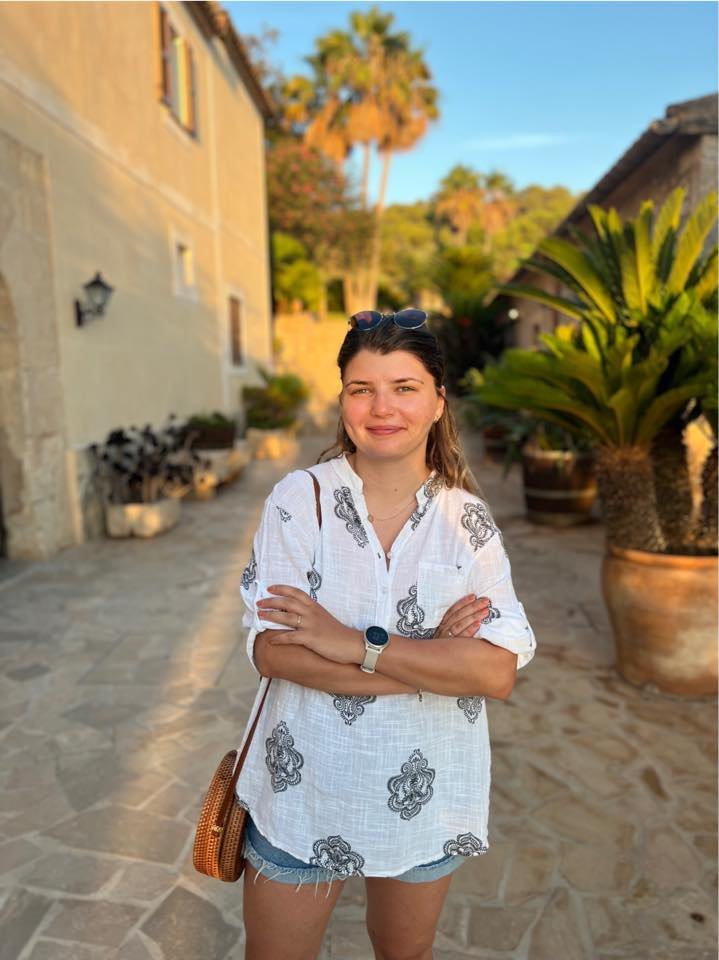
author page / EDITORIAL POLICY PAGE
Hi, I’m Ersilia

Toulouse, France

Originally from Romania

English & French Content
As a Romanian expat living in the heart of southern France, I guide English speakers to discover authentic French experiences without the language barrier. My unique perspective as both a local and an expat allows me to share insider tips, cultural insights, and practical advice that you won’t find in typical guidebooks.
My Expertise:
- French life and culture navigation
- Hidden gems across French regions
- Eastern vs Western European perspectives
- Local insights and practical travel tips
Blog Socials
Personal Pages







